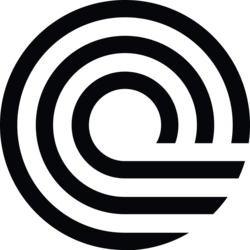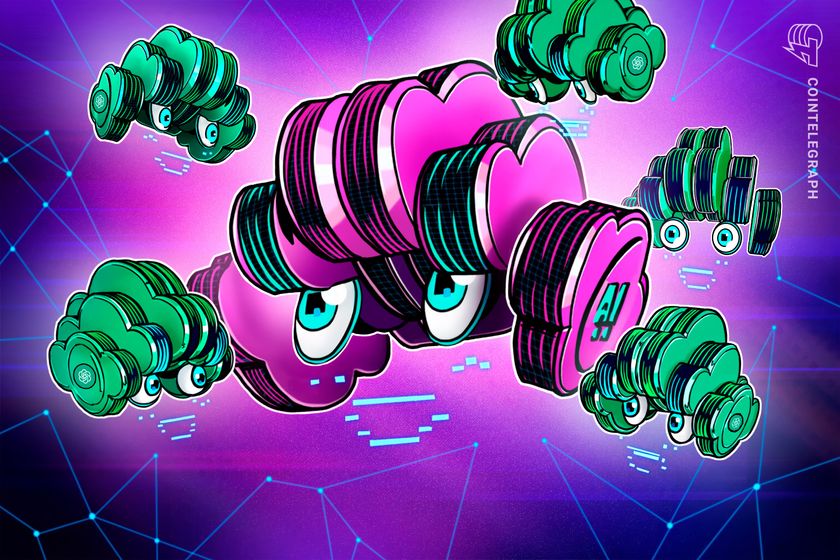Félelem és Kapzsiság Index
Top 7 nyertes
| Kriptovaluta | 24 órás változás |
|---|---|
 Artificial Superintelligence Alliance (fet) Artificial Superintelligence Alliance (fet) | 4.97% |
| 3.91% | |
 Story (ip) Story (ip) | 2.37% |
 JasmyCoin (jasmy) JasmyCoin (jasmy) | 2.15% |
 Tokenize Xchange (tkx) Tokenize Xchange (tkx) | 2% |
 Bitcoin Cash (bch) Bitcoin Cash (bch) | 1.73% |
 Quant (qnt) Quant (qnt) | 1.03% |
Top 7 vesztes
| Kriptovaluta | 24 órás változás |
|---|---|
 Fartcoin (fartcoin) Fartcoin (fartcoin) | -10.43% |
| -7.21% | |
 Bittensor (tao) Bittensor (tao) | -5.76% |
 Celestia (tia) Celestia (tia) | -5.69% |
 Ondo (ondo) Ondo (ondo) | -4.97% |
 Sonic (prev. FTM) (s) Sonic (prev. FTM) (s) | -4.96% |
 Cronos (cro) Cronos (cro) | -4.88% |


Bitcoin (BTC) hit an eleven-day high on April 13 as the crypto market relief rally closely tracked US financial policy changes.
BTC/USD 1-hour chart. Source: Cointelegraph/TradingView
Bitcoin traders say brace for more volatility
Data from Cointelegraph Markets Pro and TradingView showed BTC/USD reaching $86,000 for the first time since April 2.
The pair had reacted well to news that US President Donald Trump had decided to exclude certain key products from his ongoing trade tariffs against China.
Traditional markets are closed on weekends —creating lower-liquidity trading in crypto markets and raising the chance for price volatility— with Bitcoin subsequently dropping under $84,000.
With hours to go until the weekly close, BTC/USD was thus up 7% for the week, having started with a trip to new five-month lows.
Commenting, traders were cautious over BTC price strength.
Call me crazy but I don’t think I trust this breakout on $BTC.
— Roman (@Roman_Trading) April 12, 2025
Low volume, overbought stoch, and on a weekend.
If we can remain over 84k through Monday I’ll look for higher but for now this seems sketchy. pic.twitter.com/qKVdYAOYPJ
Daan Crypto Trades noted the ongoing interplay with the 200-day exponential moving average (EMA) at $85,000.
“This is however still a weekend move so far and we know next week will be volatile again with news regarding tariffs and the first big tech earnings coming up,” part of a post on X read.
BTC/USD 1-day chart with 200 EMA. Source: Cointelegraph/TradingView
Well-known trader Peter described the rebound from the lows as looking “more corrective than it does impulsive.”
BTC/USD 2-hour chart. Source: Peter Brandt/X
Popular trader and analyst Rekt Capital meanwhile saw the true hurdle to a Bitcoin bull market rebound coming in the form of a stubborn long-term daily downtrend.
“Bitcoin has Daily Closed above the Downtrend. Thus, breakout confirmation is underway,” one of his latest X updates explained alongside an illustrative chart.
“However BTC has previously Daily Closed above the Downtrend but failed its retest (a few of the red circles). Retest needs to be successful and it is in progress.”
BTC/USD 1-day chart. Source: Rekt Capital/X
As Cointelegraph reported, the daily downtrend, in place since late 2024, is earmarked as a key hurdle for bulls to overcome.
Related: Bollinger Bands creator says Bitcoin forming 'classic' floor near $80K
RSI bullish divergence still in play
Another post flagged promising signals on Bitcoin’s relative strength index (RSI) indicator.
A classic leading indicator, RSI continued to print another bullish divergence with price on daily timeframes.
“Bitcoin is developing yet another Higher Low on the RSI while forming Lower Lows on the price,” Rekt Capital summarized.
“Overall, throughout the cycle Bitcoin has formed Bullish Divergences like this on a few occasions already. Each Bull Div preceded reversals to the upside.”
BTC/USD 1-day chart with RSI data. Source: Rekt Capital/X
This article does not contain investment advice or recommendations. Every investment and trading move involves risk, and readers should conduct their own research when making a decision.
Style u003d "úszó: jobb ; margin: 0 0 10 px 15px ; szélesség: 240px ; " >
Lomond School, a skóciai magánintézmény, elkezdi elfogadni a Bitcoin -t a tandíjfizetésekhez, és együttműködik a Bitcoin AMMOUS AMMOUS új tantervének bemutatására.
ammous, a bitcoin standard szerzője, egy oktatási tanterv kidolgozása, amely kombinálja a bitcoin alapelveit ( btc ) és osztrák közgazdaságtan.


A non-fungible token (NFT) trader could face up to six years in prison after pleading guilty to underreporting nearly $13 million in profits from trading CryptoPunks, according to the US Attorney’s Office for the Middle District of Pennsylvania.
Waylon Wilcox, 45, admitted to filing false income tax returns for the 2021 and 2022 tax years. The former CryptoPunk investor pleaded guilty on April 9 to two counts of filing false individual income tax returns, federal prosecutors said in an April 11 press release.
Back in April 2022, Wilcox filed a false individual income tax return for the tax year 2021, which underreported his income tax by roughly $8.5 million and reduced his tax due by approximately $2.1 million.
In October 2023, Wilcox filed another false individual tax income return for the fiscal year of 2022, underreporting his income tax by an estimated $4.6 million and reducing his tax due by nearly $1.1 million.
Wilcox pleads guilty to false tax filing, press release. Source: Attorney’s Office for the Middle District of Pennsylvania
“The total maximum penalty under federal law for these offenses is up to six years of imprisonment, a term of supervised release following imprisonment, and a fine,” according to the statement. However, the exact details and timing of his sentence remain unclear.
Related: NFT trader sells CryptoPunk after a year for nearly $10M loss
The trader bought and sold 97 pieces of the CryptoPunk NFT collection, the industry’s largest NFT collection, with a $687 million market capitalization.
Source: CryptoPunks
In 2021, Wilcox sold 62 CryptoPunk NFTs for a gain of about $7.4 million but reported significantly less on his taxes. In 2022, he sold 35 more CryptoPunks for $4.9 million. The Department of Justice said Wilcox intentionally selected “no” when asked if he had engaged in digital asset transactions on both filings.
“IRS Criminal Investigation is committed to unraveling complex financial schemes involving virtual currencies and NFT transactions designed to conceal taxable income,” Philadelphia Field Office Special Agent in charge Yury Kruty said, adding:
“In today’s economic environment, it’s more important than ever that the American people feel confident that everyone is playing by the rules and paying the taxes they owe.”
The case was investigated by the Internal Revenue Service (IRS) and the Criminal Investigation Department.
Related: CZ claps back against ‘baseless’ US plea deal allegations
Crypto tax rules gain traction
Crypto tax laws attracted interest worldwide in June 2024 after the IRS issued a new crypto regulation making US crypto transactions subject to third-party tax reporting requirements for the first time.
Since January, centralized crypto exchanges (CEXs) and other brokers have been required to report the sales and exchanges of digital assets, including cryptocurrencies.
On April 10, US President Donald Trump signed a joint congressional resolution to overturn a Biden administration-era legislation that would have required decentralized finance (DeFi) protocols to also report transactions to the IRS.
Set to take effect in 2027, the so-called IRS DeFi broker rule would have expanded the tax authority’s existing reporting requirements to include DeFi platforms, requiring them to disclose gross proceeds from crypto sales, including information regarding taxpayers involved in the transactions.
However, some crypto regulatory advisers believe that stablecoin and crypto banking legislation should be a priority above new tax legislation in the US.
A “tailored regulatory approach” for areas including securities laws and removing “obstacles in banking” is a priority for US lawmakers with “more upside” for the industry, Mattan Erder, general counsel at layer-3 decentralized blockchain network Orbs, told Cointelegraph.
Magazine: SEC’s U-turn on crypto leaves key questions unanswered


AI is transforming how people interact with financial markets, and cryptocurrency trading is no exception. With tools like OpenAI’s Custom GPTs, it is now possible for beginners and enthusiasts to create intelligent trading bots capable of analyzing data, generating signals and even executing trades.
This guide analyzes the fundamentals of building a beginner-friendly AI crypto trading bot using Custom GPTs. It covers setup, strategy design, coding, testing and important considerations for safety and success.
What is a custom GPT?
A custom GPT (generative pretrained transformer) is a personalized version of OpenAI’s ChatGPT. It can be trained to follow specific instructions, work with uploaded documents and assist with niche tasks, including crypto trading bot development.
These models can help automate tedious processes, generate and troubleshoot code, analyze technical indicators and even interpret crypto news or market sentiment, making them ideal companions for building algorithmic trading bots.
What you’ll need to get started
Before creating a trading bot, the following components are necessary:
OpenAI ChatGPT Plus subscription (for access to GPT-4 and Custom GPTs).
A crypto exchange account that offers API access (e.g., Coinbase, Binance, Kraken).
Basic knowledge of Python (or willingness to learn).
A paper trading environment to safely test strategies.
Optional: A VPS or cloud server to run the bot continuously.
Did you know? Python’s creator, Guido van Rossum, named the language after Monty Python’s Flying Circus, aiming for something fun and approachable.
Step-by-step guide to building an AI trading bot with custom GPTs
Whether you’re looking to generate trade signals, interpret news sentiment or automate strategy logic, the below step-by-step approach helps you learn the basics of combining AI with crypto trading.
With sample Python scripts and output examples, you'll see how to connect a custom GPT to a trading system, generate trade signals and automate decisions using real-time market data.
Step 1: Define a simple trading strategy
Start by identifying a basic rule-based strategy that is easy to automate. Examples include:
Buy when Bitcoin’s (BTC) daily price drops by more than 3%.
Sell when RSI (relative strength index) exceeds 70.
Enter a long position after a bullish moving average convergence divergence (MACD) crossover.
Trade based on sentiment from recent crypto headlines.
Clear, rule-based logic is essential for creating effective code and minimizing confusion for your Custom GPT.
Step 2: Create a custom GPT
To build a personalized GPT model:
Visit chat.openai.com
Navigate to Explore GPTs > Create
Name the model (e.g., “Crypto Trading Assistant”)
In the instructions section, define its role clearly. For example:
“You are a Python developer specialized in crypto trading bots.”
“You understand technical analysis and crypto APIs.”
“You help generate and debug trading bot code.”
Optional: Upload exchange API documentation or trading strategy PDFs for additional context.
Step 3: Generate the trading bot code (with GPT’s help)
Use the custom GPT to help generate a Python script. For example, type:
“Write a basic Python script that connects to Binance using ccxt and buys BTC when RSI drops below 30. I am a beginner and don’t understand code much so I need a simple and short script please.”
The GPT can provide:
Code for connecting to the exchange via API.
Technical indicator calculations using libraries like ta or TA-lib.
Trading signal logic.
Sample buy/sell execution commands.
Python libraries commonly used for such tasks are:
ccxt for multi-exchange API support.
pandas for market data manipulation.
schedule or apscheduler for running timed tasks.
To begin, the user must install two Python libraries: ccxt for accessing the Binance API, and ta (technical analysis) for calculating the RSI. This can be done by running the following command in a terminal:
pip install ccxt ta
Next, the user should replace the placeholder API key and secret with their actual Binance API credentials. These can be generated from a Binance account dashboard. The script uses a five-minute candlestick chart to determine short-term RSI conditions.
Below is the full script:
====================================================================
import ccxt
import pandas as pd
import ta
# Your Binance API keys (use your own)
api_key = 'YOUR_API_KEY'
api_secret = 'YOUR_API_SECRET'
# Connect to Binance
exchange = ccxt.binance({
'apiKey': api_key,
'secret': api_secret,
'enableRateLimit': True,
})
# Get BTC/USDT 1h candles
bars = exchange.fetch_ohlcv('BTC/USDT', timeframe='1h', limit=100)
df = pd.DataFrame(bars, columns=['timestamp', 'open', 'high', 'low', 'close', 'volume'])
# Calculate RSI
df['rsi'] = ta.momentum.RSIIndicator(df['close'], window=14).rsi()
# Check latest RSI value
latest_rsi = df['rsi'].iloc[-1]
print(f"Latest RSI: {latest_rsi}")
# If RSI < 30, buy 0.001 BTC
if latest_rsi < 30:
order = exchange.create_market_buy_order('BTC/USDT', 0.001)
print("Buy order placed:", order)
else:
print("RSI not low enough to buy.")
====================================================================
Please note that the above script is intended for illustration purposes. It does not include risk management features, error handling or safeguards against rapid trading. Beginners should test this code in a simulated environment or on Binance’s testnet before considering any use with real funds.
Also, the above code uses market orders, which execute immediately at the current price and only run once. For continuous trading, you’d put it in a loop or scheduler.
Images below show what the sample output would look like:
The sample output shows how the trading bot reacts to market conditions using the RSI indicator. When the RSI drops below 30, as seen with “Latest RSI: 27.46,” it indicates the market may be oversold, prompting the bot to place a market buy order. The order details confirm a successful trade with 0.001 BTC purchased.
If the RSI is higher, such as “41.87,” the bot prints “RSI not low enough to buy,” meaning no trade is made. This logic helps automate entry decisions, but the script has limitations like no sell condition, no continuous monitoring and no real-time risk management features, as explained previously.
Step 4: Implement risk management
Risk control is a critical component of any automated trading strategy. Ensure your bot includes:
Stop-loss and take-profit mechanisms.
Position size limits to avoid overexposure.
Rate-limiting or cooldown periods between trades.
Capital allocation controls, such as only risking 1–2% of total capital per trade.
Prompt your GPT with instructions like:
“Add a stop-loss to the RSI trading bot at 5% below the entry price.”
Step 5: Test in a paper trading environment
Never deploy untested bots with real capital. Most exchanges offer testnets or sandbox environments where trades can be simulated safely.
Alternatives include:
Running simulations on historical data (backtesting).
Logging “paper trades” to a file instead of executing real trades.
Testing ensures that logic is sound, risk is controlled and the bot performs as expected under various conditions.
Step 6: Deploy the bot for live trading (Optional)
Once the bot has passed paper trading tests:
Replace test API keys: First, replace your test API keys with live API keys from your chosen exchange’s account. These keys allow the bot to access your real trading account. To do this, log in to exchange, go to the API management section and create a new set of API keys. Copy the API key and secret into your script. It is crucial to handle these keys securely and avoid sharing them or including them in public code.
Set up secure API permissions (disable withdrawals): Adjust the security settings for your API keys. Make sure that only the permissions you need are enabled. For example, enable only “spot and margin trading” and disable permissions like “withdrawals” to reduce the risk of unauthorized fund transfers. Exchanges like Binance also allow you to limit API access to specific IP addresses, which adds another layer of protection.
Host the bot on a cloud server: If you want the bot to trade continuously without relying on your personal computer, you’ll need to host it on a cloud server. This means running the script on a virtual machine that stays online 24/7. Services like Amazon Web Services (AWS), DigitalOcean or PythonAnywhere provide this functionality. Among these, PythonAnywhere is often the easiest to set up for beginners, as it supports running Python scripts directly in a web interface.
Still, always start small and monitor the bot regularly. Mistakes or market changes can result in losses, so careful setup and ongoing supervision are essential.
Did you know? Exposed API keys are a top cause of crypto theft. Always store them in environment variables — not inside your code.
Ready-made bot templates (starter logic)
The templates below are basic strategy ideas that beginners can easily understand. They show the core logic behind when a bot should buy, like “buy when RSI is below 30.”
Even if you’re new to coding, you can take these simple ideas and ask your Custom GPT to turn them into full, working Python scripts. GPT can help you write, explain and improve the code, so you don’t need to be a developer to get started.
In addition, here is a simple checklist for building and testing a crypto trading bot using the RSI strategy:
Just choose your trading strategy, describe what you want, and let GPT do the heavy lifting, including backtesting, live trading or multi-coin support.
RSI strategy bot (buy Low RSI)
Logic: Buy BTC when RSI drops below 30 (oversold).
if rsi < 30:
place_buy_order()
Used for: Momentum reversal strategies.
Tools: ta library for RSI.
2. MACD crossover bot
Logic: Buy when MACD line crosses above signal line.
if macd > signal and previous_macd < previous_signal:
place_buy_order()
Used for: Trend-following and swing trading.
Tools: ta.trend.MACD or TA-Lib.
3. News sentiment bot
Logic: Use AI (Custom GPT) to scan headlines for bullish/bearish sentiment.
if “bullish” in sentiment_analysis(latest_headlines):
place_buy_order()
Used for: Reacting to market-moving news or tweets.
Tools: News APIs + GPT sentiment classifier.
Risks concerning AI-powered trading bots
While trading bots can be powerful tools, they also come with serious risks:
Market volatility: Sudden price swings can lead to unexpected losses.
API errors or rate limits: Improper handling can cause the bot to miss trades or place incorrect orders.
Bugs in code: A single logic error can result in repeated losses or account liquidation.
Security vulnerabilities: Storing API keys insecurely can expose your funds.
Overfitting: Bots tuned to perform well in backtests may fail in live conditions.
Always start with small amounts, use strong risk management and continuously monitor bot behavior. While AI can offer powerful support, it’s crucial to respect the risks involved. A successful trading bot combines intelligent strategy, responsible execution and ongoing learning.
Build slowly, test carefully and use your Custom GPT not just as a tool — but also as a mentor.


Bitcoin (BTC) holders were the first to point out flaws in the United States economic data and position themselves for the potential upside, says crypto entrepreneur Anthony Pompliano.
“Bitcoiners were the first large-scale group to recognize the economic data was wrong, and they figured out a way to financially capture upside if they were right,” Pompliano said in an April 12 X post.
Pompliano foresees more will realize data is “inaccurate”
“The unspoken secret as to why so many finance folks are wrong in their analysis of the tariffs is because the finance folks believe the government data,” he added.
Amid the widespread uncertainty and ongoing fear over US President Donald Trump’s imposed tariffs, Pompliano questioned the accuracy of US inflation figures, job numbers, and GDP statistics. He added that “eventually everyone else will realize the data is inaccurate.”
It comes after Pompliano pointed out in a March 20 LinkedIn post, US Treasury Secretary Scott Bessent’s appearance on the All-In podcast, where Bessent was asked directly if he trusted the data — and replied, “no.”
“Even the Treasury Secretary has now publicly acknowledged he doesn’t believe the data. He says we must listen to the people rather than blindly follow the government data reports.”
Concerns about the reliability of US economic data have been brewing for a while. A July 2024 report argued that new approaches are needed to “ensure government statistics remain dependable.”
Source: Anthony Pompliano
It comes as ongoing concerns over Trump’s imposed tariffs have led some crypto analysts to reinforce the idea that Bitcoin could outlast the US dollar in the long run.
Bitwise Invest head of alpha strategies Jeff Parks said on April 9 that there is a “higher chance Bitcoin survives over the dollar in our lifetime after today.”
Over the past five days, the US dollar index (DXY) has dropped 3.19%, currently sitting at 99.783 at the time of publication, according to TradingView data.
The US dollar index is down 8.06% since the beginning of 2025. Source: TradingView
Several Wall Street analysts were under the belief that Trump’s imposed tariffs would bolster the US dollar, according to a recent Wall Street Journal report.
Pompliano said, “The mainstream finance conversation has become an intellectual boondoggle where most people regurgitate ill-informed takes based on bad data.”
Analysts recently pointed out Bitcoin’s recent breakaway from stocks
Analysts even pointed out that while the stock market was “tanking” on April 4 amid tariff uncertainty, Bitcoin didn’t decline as much as expected. During periods of macroeconomic uncertainty, Bitcoin and crypto assets have historically been more volatile than the stock market.
Related: Bitcoin price soars to $83.5K — Have pro BTC traders turned bullish?
On April 4, Cointelegraph reported that Bitcoin was steady above the $82,000 level, and as US equities markets collapsed, Bitcoin rallied to $84,720, reflecting price action, which is uncharacteristic of the norm.
Meanwhile, former BitMEX CEO Arthur Hayes said Bitcoin may be entering what he calls “up only mode,” as a deepening crisis in the US bond market potentially drives investors away from traditional haven assets and toward alternative stores of value.
Magazine: Memecoin degeneracy is funding groundbreaking anti-aging research
mondott Az X. cpw -n, vagy a pénztárcánkénti költségen közzétett legfrissebb jelentésben magasabbnak tekintik & ldquo ; minőség & rdquo ; Metrikus, mert nyomon követi a weboldal látogatói költségeit egy kripto pénztárcával, amelyet már telepítettek a böngészőbe. may be to blame
Nadler previously told CointElegraph, hogy elemzésük adatok azt mutatták, hogy a pénztárcával rendelkező felhasználók nagyobb valószínűséggel konvertálnak kriptográfiai termékekké.
<ábra >cpw a különböző régiókban a bika piacai során a 2024-es bika piacán. href u003d "https: //x.com/asafnadler/status/1901655081470087282 " rel u003d "nofollow noopener " cél u003d "_ üres " text u003d "null " " Cím u003d "https: //x.com/asafnadler/status/1901655081470087282 " > asaf nadler
& ldquo ; Ha a Web3 Gaming valóban & ldquo ; elkerülhetetlen, & rdquo ; Meg kell találnunk egy erősebb UA-motort, hogy ugyanolyan fenntarthatóvá tegyük, mint a Web2-ben. Zirlin azt mondta: egy április 11 -i üzenetben, amely a magas cpw időszakokhoz jó idő. Piaci részesedés, és készülj fel a következő piaci bővítésre, & rdquo ; - mondta Zirlin. & ldquo ; tudja, mikor


Today in crypto, Trump exempts select electronics from trade tariffs, former Binance CEO Changpeng Zhao denied reports that he agreed to testify against Justin Sun, calling them baseless and politically motivated, and acting Chair of the US Securities and Exchange Commission, Mark Uyeda, proposed a temporary crypto framework in the US.
Select electronics spared from reciprocal tariffs
Select electronic products, including smartphones, processing chips, and computers are exempt from ‘reciprocal’ tariffs under President Trump’s sweeping tariff order, a relief to US tech companies and shareholders.
According to a release from the US Customs and Border Protection, other consumer electronics such as internet modems, storage devices, and components such as semiconductors are also exempt from the additional reciprocal tariffs.
Notice exempting select electronics from reciprocal trade tariffs. Source: US Customs and Border Protection
The price of Bitcoin (BTC) surged by approximately 2.5% on the same day of the announcement and broke the $85,000 level.
Bitcoin's price reaction could signal that at least some investors are entering the market again as risk appetite rebounds on positive macro headlines.
CZ claps back against “baseless” US plea deal allegations
Changpeng “CZ” Zhao, former CEO of Binance, has denied claims that he agreed to provide evidence against Tron founder Justin Sun as part of a plea deal with the United States Department of Justice (DOJ).
In an April 11 report, The Wall Street Journal cited unnamed sources alleging that CZ had agreed to testify against Sun under the terms of his settlement with US prosecutors.
“As part of Zhao’s plea deal, he agreed to give evidence on Sun to prosecutors,” an “arrangement” that “hasn’t previously been reported,” the WSJ report stated, citing sources familiar with the matter.
“WSJ is really TRYING here. They seem to have forgotten who went to prison and who didn't,” Zhao wrote in an April 12 X post. “People who become gov witnesses don’t go to prison. They are protected. I heard someone paid WSJ employees to smear me.”
Source: Changpeng Zhao
CZ was sentenced to four months in prison in April 2024 for Anti-Money Laundering (AML) violations. He walked free from federal prison on Sept. 27 as the wealthiest person to ever serve a US prison sentence, with a $60 billion net worth at the time.
In a separate April 11 post, CZ claimed multiple individuals had warned him about the Journal’s intentions to publish what he described as a “hit piece.”
US crypto industry needs band-aid now, “long-term solution” later — Uyeda
A fast-tracked temporary crypto regulatory framework could bolster innovation within the US crypto industry while permanent regulations are still in the works, says acting US Securities and Exchange Commission (SEC) chair Mark Uyeda.
“A time-limited, conditional exemptive relief framework for registrants and non-registrants could allow for greater innovation with blockchain technology within the United States in the near term,” Uyeda said at the SEC’s April 11 Crypto Task Force roundtable titled “Between a Block and a Hard Place: Tailoring Regulation for Crypto Trading.”
Uyeda said this might be the short-term answer as the SEC works toward a “long-term solution,” at the roundtable with SEC members and crypto industry executives, including Uniswap Labs’ Katherine Minarik, Cumberland DRW’s Chelsea Pizzola, and Coinbase’s Gregory Tusar.
Nagy Tranzakciók
| Kriptovaluta | Küldő | Fogadó | Összeg (USD) | Amikor |
|---|---|---|---|---|
| Unknown | Unknown | $1370158.6 | 1 perc ezelőtt | |
| Binance | Binance | $1794947.6 | 3 perc ezelőtt | |
| Unknown | Unknown | $4829619 | 4 perc ezelőtt | |
| Unknown | Unknown | $5629813 | 5 perc ezelőtt | |
| Binance | Unknown | $1496867.8 | 5 perc ezelőtt | |
| Unknown | Bitstamp | $3991413.2 | 5 perc ezelőtt | |
| Unknown | Unknown | $2809533.2 | 5 perc ezelőtt | |
| Binance | Unknown | $3354687.2 | 5 perc ezelőtt |
Mai nagy gazdasági események
| Idő | Esemény | Ország |
|---|---|---|
| 09:30:00 | Nagykereskedelmi árindex | India |
| 02:40:00 | Boosty teljesítménye, FOMC tag | Egyesült Államok |
| 02:01:00 | Kiskereskedelmi értékesítési mennyiség a BRC -től | Britannia |
| 01:00:00 | FOMC Harker beszéde | Egyesült Államok |
| 20:00:00 | K. Waller beszéde a Fed -től | Egyesült Államok |
| 19:48:41 | Balance Balance Balance Balance (USD ) | Kína |
| 19:48:39 | Exportmennyiség | Kína |
| 19:48:39 | Az import mennyisége | Kína |
| 15:30:00 | A nagykereskedelmi értékesítés mennyisége | Kanada |
| 15:00:00 | A kiadott kölcsönök mennyisége | Kína |
| 14:25:00 | A központi bank piaci trendekről szóló jelentésének közzététele | Brazília |
| 14:00:00 | Havi OPEC jelentés | Egyesült Államok |
| 09:30:00 | A gyártók árai (PPI ) Svájc | Svájc |
| 07:30:00 | Az ipari termelés mennyisége | Japán |